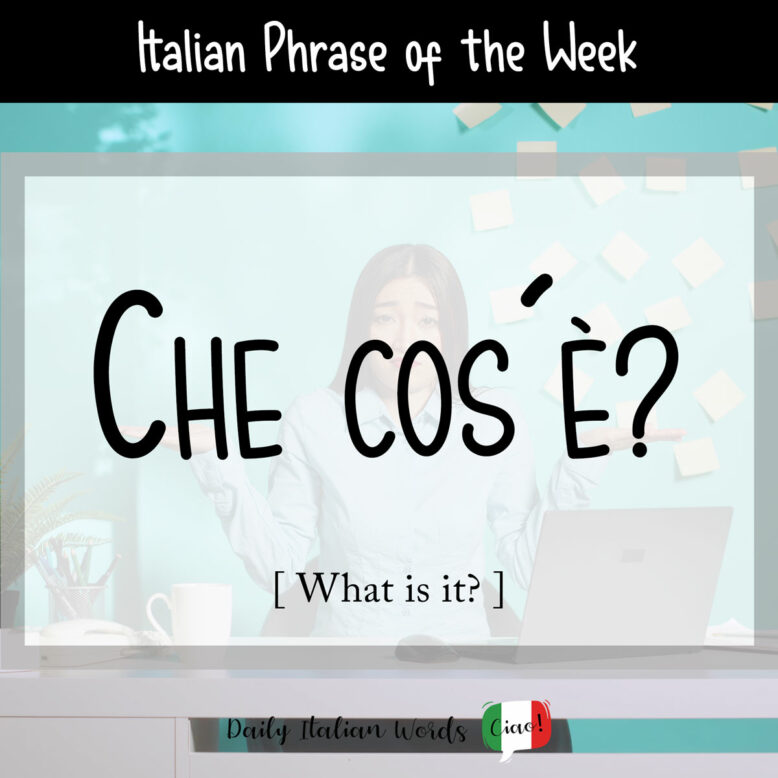If you encounter something you’ve never seen before, the most logical question you could ask is:
Che cos’è?
What is it?

The words che and cosa, when used together, translate as what in English. Che on its own also means what whereas cosa means thing, so you are literally saying “what thing”.
È, which is the equivalent of the English word is, is the third-person singular of the verb essere (to be). Via a process known as elision, it causes the word-final a in cosa to disappear. In writing, the a is replaced by an apostrophe.
Note that in the case of this particular expression, you can drop the che and simply say cosa on its own.
Cos’è?
What is it?

In informal Italian, it isn’t necessary to use a pronoun to express the concept of ‘it’. This is because the verb form and context clarify the meaning. In the place of ‘it’, you will often see the masculine demonstrative pronouns questo (this) and quello (that).
Che cos’è questo?
What is this?
Che cos’è quello?
What is that?
If the speaker presumes that the unknown subject is feminine, or if they elaborate by adding on words such as cosa / roba (thing), they will use the feminine demonstrative pronouns questa (this) and quella (that) instead. They may also reinforce the phrase with qui / qua (here).
Che cos’è questa cosa qui?
Che cos’è questa roba qua?
What is this thing here?

Note: In colloquial English, What is it? can also work as a substitute for the phrases What’s up?, What’s going on? or What’s wrong?
In this case, the expression you would use in Italian is Che cosa c’è? or Che c’è?.
Heather Broster is a graduate with honours in linguistics from the University of Western Ontario. She is an aspiring polyglot, proficient in English and Italian, as well as Japanese, Welsh, and French to varying degrees of fluency. Originally from Toronto, Heather has resided in various countries, notably Italy for a period of six years. Her primary focus lies in the fields of language acquisition, education, and bilingual instruction.


